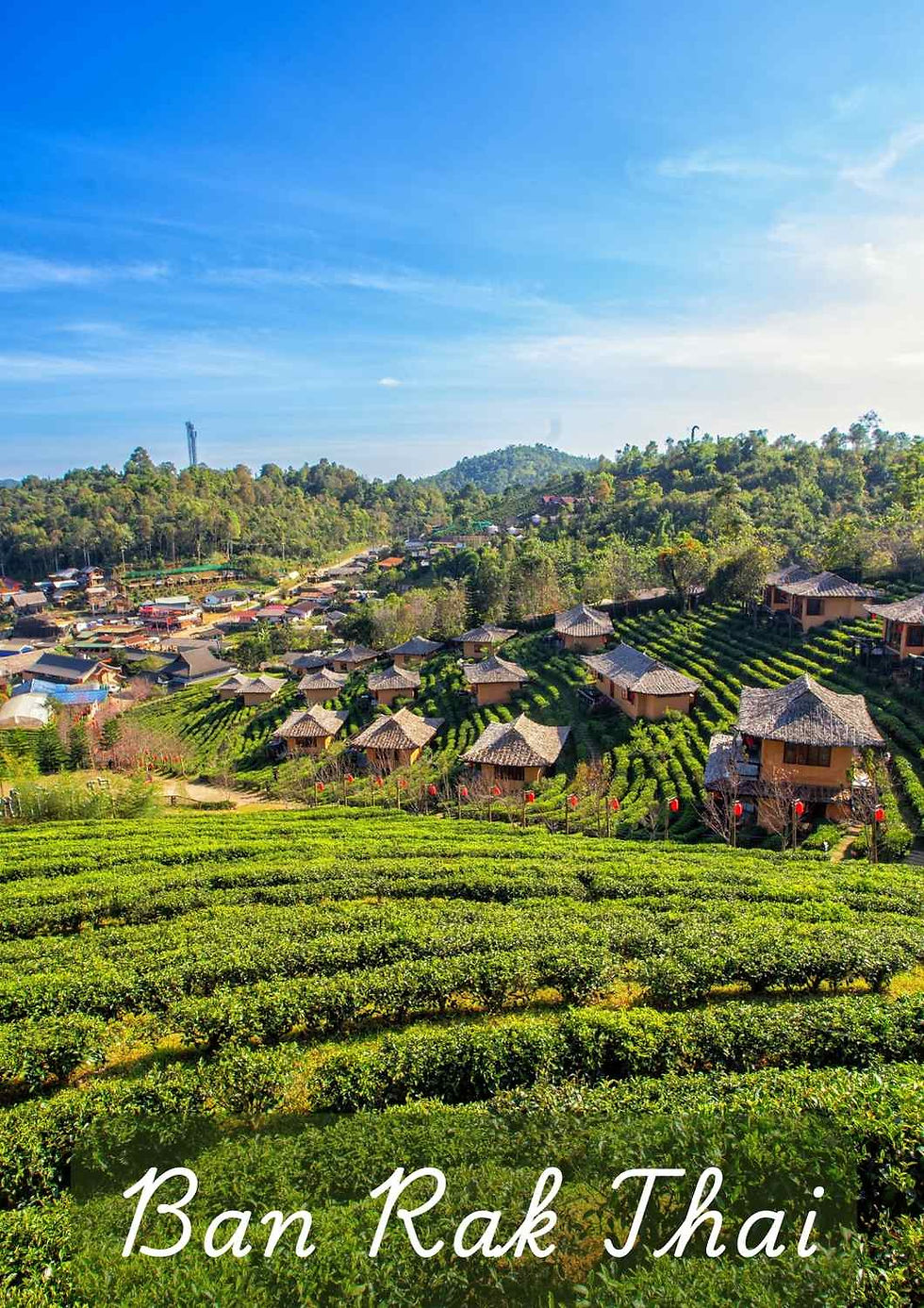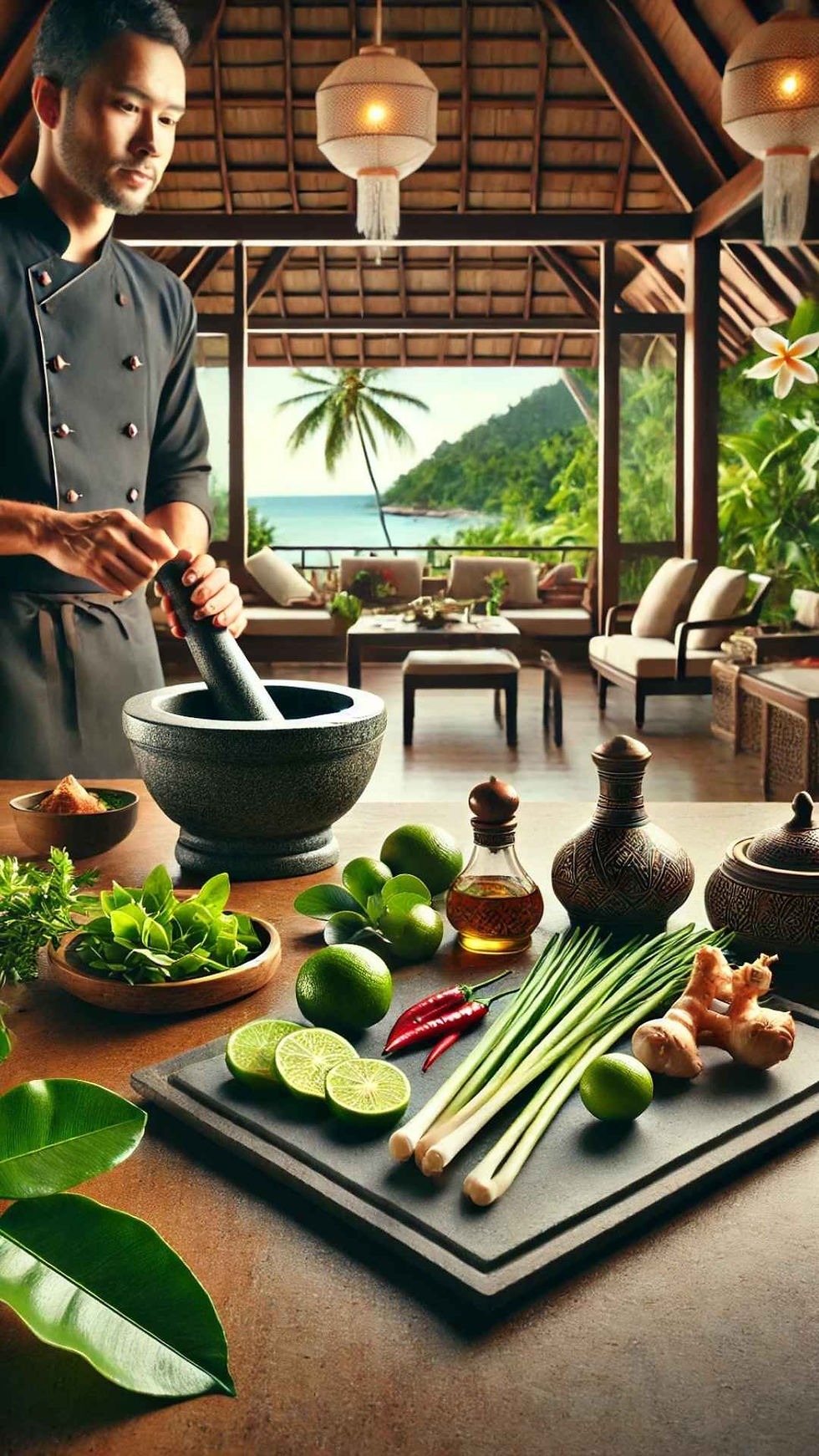Isan cuisine: History, flavours and the dishes that tell the story of North-East Thailand
- InFusion

- Sep 28
- 5 min read
Updated: Nov 12

We have started a series devoted to Thailand’s regional cuisines. After a general introduction and a first article dedicated to the cuisine of the North, this new chapter takes us to the North East, a region known as Isan.
We will see how history, geography and climate have shaped a unique culinary identity, influenced by exchanges with neighbouring Laos and Cambodia, by ingenious preservation methods, and by an intensity of flavour that has become emblematic. Sticky rice, larb, som tam, tom sep, grilled meats and fermented dishes are at the heart of this exploration of Isan cuisine, a food culture that reflects both a region and its traditions.
Geography and heritage shaping Isan cuisine
Isan stretches across the Khorat Plateau. To the east, the Mekong marks a natural border with Laos, yet it has always linked the banks through river markets and crossings, maintaining strong culinary continuity. To the south, the Dangrek Mountains border Cambodia. Exchanges are more limited here, but the historic presence of Khmer communities in provinces such as Surin, Sisaket and Buriram has left distinct culinary traces. This dual openness explains why a predominantly Lao base coexists with local Khmer influences in Isan cooking.
Climate, soil and culinary responses
North East Thailand experiences a long dry season followed by a short rainy season. The plateau’s soils are often sandy and acidic, poor in organic matter, and subject to leaching when heavy rains wash nutrients deep underground. Instead of seeing this as a weakness, the inhabitants created a cuisine of resilience. Fish and vegetables are fermented, foods are dried or grilled, and powerful sauces and carefully balanced condiments extend ingredients beyond the rainy season while giving Isan food its distinctive intensity. The use of dried chilli is part of this logic. It keeps perfectly through the dry months, develops a deep aroma when roasted, and colours sauces a bright red.
Rice, farming and livestock in the North East
Sticky rice is the foundation of Isan food culture and accompanies every meal. Some of it is transformed into khao khua, sticky rice toasted and pounded, which adds fragrance and texture to salads and soups. Isan also produces a highly prized jasmine rice. Since many paddies depend on rainfall rather than irrigation, harvesting usually happens only once a year. This slower rhythm contributes to the aromatic reputation of hom mali rice from certain North Eastern provinces. To secure their income, farmers also grow cassava, sugar cane and other drought-resistant tubers. Pig, poultry, cattle and buffalo farming remains essential, explaining the abundance of larb, grilled dishes and charcuterie. In the Chi and Mun rivers, tilapia aquaculture has developed widely. This affordable fish naturally found its way into daily meals.
Crossroads of flavour
Nong Khai is a gateway to Vientiane. The Lao continuity is strong here with pounded salads, laab and koi, but there is also a solid Vietnamese presence with kuy chap yuan, nem nuong and filled baguettes. Nakhon Ratchasima, better known as Korat, plays the role of an inland crossroads. Here you will find pad mee Korat, rice noodles from Ban Pradok and a celebrated kai yang. The Vietnamese presence exists too, though less visibly than in Nong Khai, while influences from travellers blend with local traditions.
What defines Isan cuisine
Isan food is first recognised by the combination of sticky rice and khao khua. One nourishes and structures the meal, the other, roasted and pounded, adds a toasted note that binds preparations together. Dried chillies, often roasted then pounded, give depth to broths and sauces. Nam chim jaew is the emblem. This red dipping sauce combines dried chilli, tamarind, khao khua and herbs. It is the perfect partner for grilled chicken or pork.
Pounded salads and som tam
The pounding technique, shared with Laos, shapes a large family of salads. Som tam, the green papaya salad, is the best known example. In Isan, it is often prepared with pla ra, the local fermented fish, and sometimes freshwater crabs. Many other vegetables make their way into the mortar, from cucumber to bamboo shoots, to create fresh salads with bold seasoning. Pounding is not just a gesture. It blends flavours and alters texture to better carry the dressing.
Larb, nam tok and the culture of raw food
Isan larb combines minced meat, khao khua, sour juice, herbs and dried chilli. It is distinctly different from Northern larb, which relies on a mix of roasted dry spices. Nam tok applies the same principle to sliced grilled meat, often beef or pork, whose caramelised surface contrasts with the crunch of khao khua. The culture of raw food appears in koi salads. The most common are made with raw beef or river fish, seasoned just before serving with lime, dried chilli and herbs. This practice highlights the importance of freshness and a taste for direct intensity in Isan.
Tom sep soups, identity in a bowl
Tom sep is written ต้มแซ่บ. Tom refers to cooking in broth. Sep, in the Isan dialect, means tasty and well seasoned. Tom sep is a clear soup, spicy and tangy, scented with local herbs and sometimes thickened with a pinch of khao khua. It is often made with beef, using gelatinous cuts or offal. The soup embodies the search for a clean flavour, simple in construction yet rich in sensation.
Grilling, fire as a revealer
Grilling is everywhere in Isan because it suits local resources and is highly effective. A thoughtful marinade, well managed fire and a dipping sauce are enough to elevate the ingredient. Kai yang, grilled chicken, and mu yang, grilled pork, are inseparable from sticky rice and nam chim jaew. Sua rong hai, often translated as crying tiger, brings together grilled beef with a red tamarind and dried chilli sauce. This dish has become a national classic while remaining profoundly Isan.
Fermentation and crispy rice dishes
Fermentation is a central skill. Sai krok Isan is a pork sausage mixed with cooked rice. Nem mu is a preparation of fermented pork. It appears in the crispy rice salad called nem kluk, a mixture of crumbled fried rice, nem and fresh herbs. These techniques extend the life of ingredients and create unique flavour profiles.
Insects and night markets
In the evening markets, you will find crickets, grasshoppers and bamboo worms, grilled or stir fried. These crunchy snacks are an easily available source of protein. They illustrate the pragmatic approach to food in Isan, attentive to whatever the land and the season provide.
Isan cuisine, a living and flavourful heritage
Isan cooking is built on strong natural constraints, but has turned them into strengths. Poor soils encouraged preservation and fermentation. Drought made dried chillies popular, roasted and pounded to prolong their power. The Mekong and its river markets cemented links with Laos, while the southern hills preserved local Khmer influences. Out of this history came the great dishes of the North East: sticky rice, khao khua, som tam, larb, nam tok, koi, tom sep, grilled meats and fermented foods. These specialities tell the story of Isan as much as they reflect its landscapes and seasons. They have become national emblems, yet they retain a strong identity, instantly recognisable. To explore these dishes further, read our article Isan Recipes, which introduces our book devoted to the authentic cuisine of Northeast Thailand.
Cooking Isan food at home in fifty recipes
For those who wish to continue this culinary journey, I have gathered fifty authentic Isan recipes in a book. Some call for specific ingredients but many are accessible and easy to make. They let you discover the culture of larb, prepare a green papaya salad, or enjoy a beautiful grilled beef with herbs. This book is the perfect gateway to cooking the richness of Isan cuisine at home.



Comments